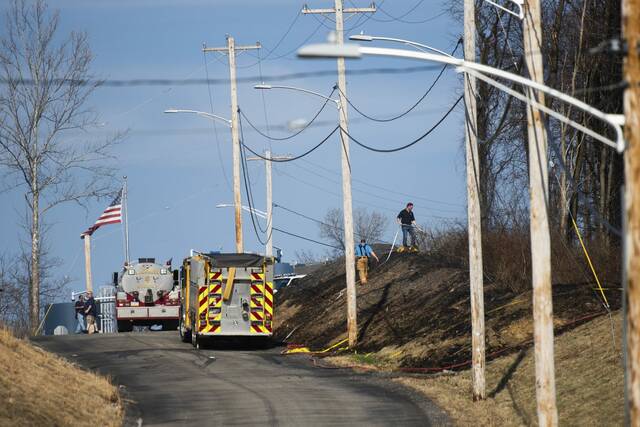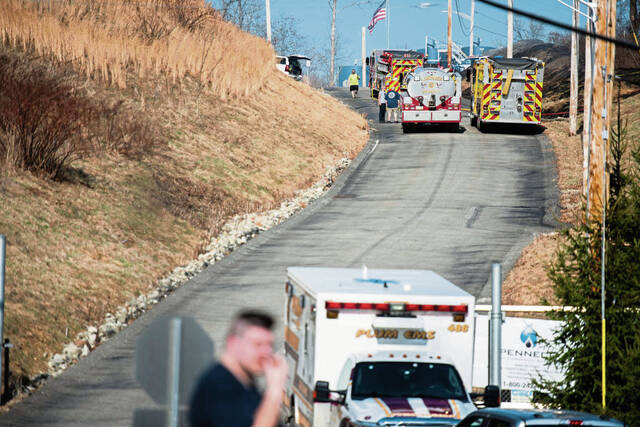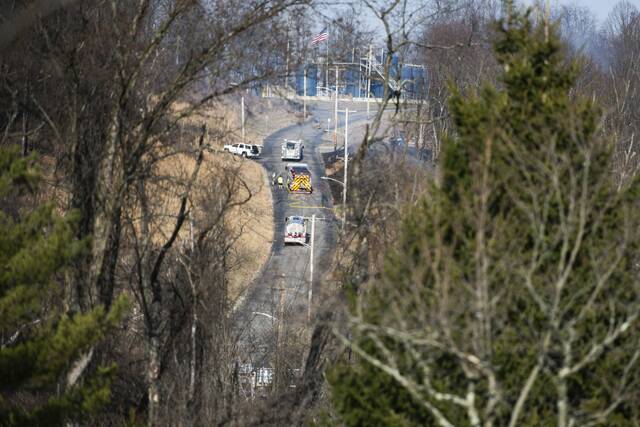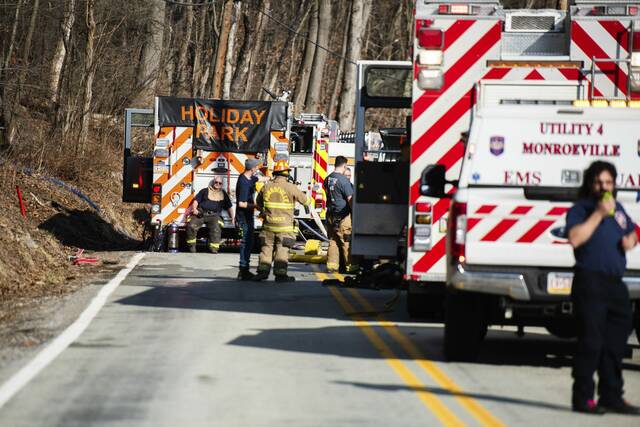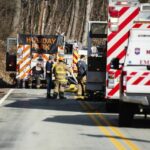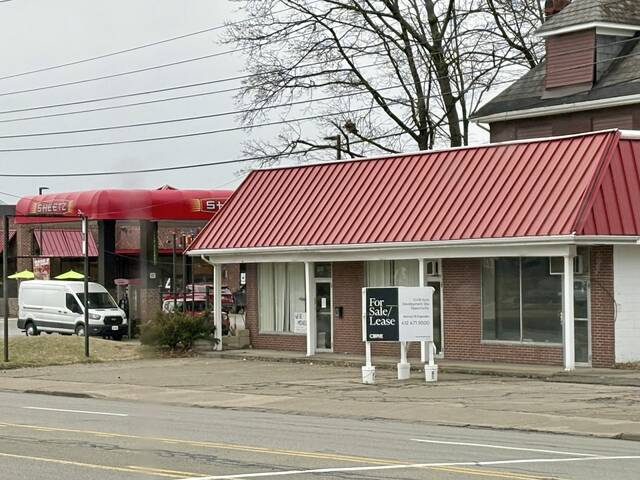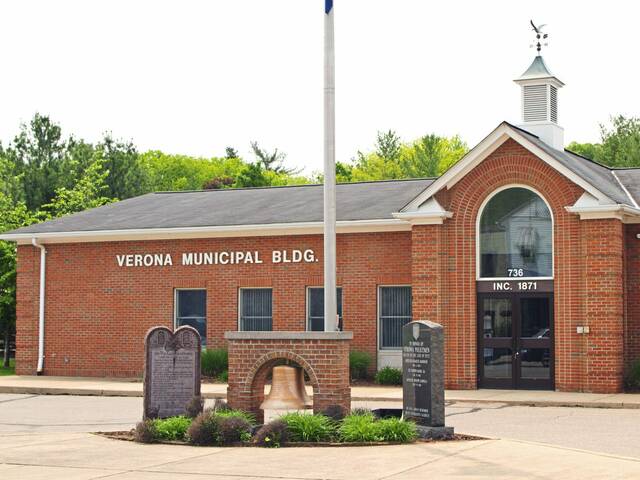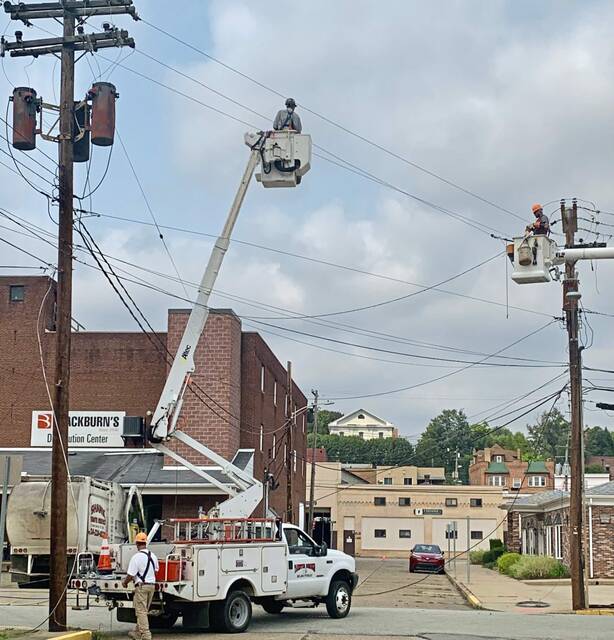Josh Wiegand already has had enough of Pennsylvania’s early wildfire season — and it’s only beginning.
As chief of West Deer Volunteer Fire Company No. 3, he has responded to five large brush fires in just the past week, with this week’s warmup creating conditions ripe for wildfires.
“There is low humidity, high temperatures and dry conditions,” Wiegand said.
Such weather is typical for late winter and early spring. That’s why the state makes one week in March each year “Wildfire Awareness Week.” This year, it starts Sunday.
Colton Milcarek, a meteorologist with the National Weather Service, said wildfire season in Southwestern Pennsylvania runs from March to May. He expects dry, warm and windy conditions to continue in the short run, and “just slightly above normal precipitation rates that will continue throughout the spring season.”
Milcarek said wildfires should start to subside once leaves start to grow back.
Over the past five years, Pennsylvania has experienced more than 1,000 wildfires each year, as documented by the state Department of Conservation and Natural Resources.
Matt Reed, wildfire operations and planning chief at DCNR, said the state had almost 1,500 fires that affected 3,276 acres in 2024. So far this year, the state has had around 200 wildfires reported affecting 339 acres.
Reed said past years show an “upward trend” in the number of wildfires in Pennsylvania.
He called 1999 a benchmark year, when there was a total of 1,406 fires over 8,000 acres. That number of fires was not exceeded until 2023, when the state saw 1,901 fires over 9,000 acres. Reed said those numbers were surpassed again last year, and in 2021 there were almost as many: 1,372 wildfires.
“We have statistics back to the early 20th century, but there were far fewer roads to use as fuel breaks, equipment was nearly nonexistent and wildfires were fought solely with hand tools,” Reed said in an email. “So, it was not uncommon to exceed 3,000 to 4,000 fires for hundreds of thousands of acres.”
This week, there have been multiple brush fires in West Deer and Penn Hills in addition to fires in Plum, New Kensington, Jefferson Township and Donegal Township. There have been multiple fires across Armstrong County.
The Westmoreland Rough Terrain Fire and Rescue 211 Squad is a group of volunteers created for and dedicated to search, rescue and brush and wildland fires. The team uses ATVs equipped with water tanks, pumps, lights, sirens and tools.
The vehicles can get the riders to places where a regular-sized fire truck can’t go, said Chief Jason Frazier.
“We don’t have a specific station,” Frazier said. “We get called by other fire departments.”
He said the team serves multiple counties and fire departments and goes wherever called.
Frazier said it’s been an early start to brush fire season this year.
“Normally, it’s the end of March, beginning of April,” he said. “The dry conditions have been what’s sparking all of this. Dry conditions — it’s when you walk in your grass and hear that crunch. Nothing’s green. Everything is just so brown and dry.”
Armstrong County has been averaging a couple of brush fires per day, according to the DCNR’s mapping page.
Firefighters from Plum and surrounding areas spent much of Thursday afternoon at a brush fire along Old Leechburg Road that was endangering a home and some vehicles.
Plum police checked on a man who lives in the 1800 block to make sure he and his pets left his house as firefighters fought the nearby fire. Police say the man, his pets and the firefighters were all unharmed.
First responders in New Sewickley battled a one-acre brush fire Thursday afternoon, New Sewickley police Chief Gregory Carney said in a news release.
While fighting the fire, emergency services found 86-year-old Charles Flook dead. Carnery said Flook had been burning household rubbish prior to the fire spreading to the nearby woods and neighboring properties. Flook’s cause of death has not been determined. The township’s police and fire departments have advised residents not to burn anything when the weather is dry and windy.
Pleasant Unity Volunteer Fire Chief John Bacha said brush fires are different from the structure fires his department typically deals with. Afternoon and early evening hours are the most common times to get a brush fire call, he said.
Bacha’s department has been called to a couple of smaller fires this past week.
“Typically, the worst things that can make a brush fire spread quickly is when we have low humidity and high winds,” Bacha said. “The winds will push a brush fire over an area very quickly.”
He said it’s imperative that enough personnel are responding to fight the flames. If not enough people are in front of it, the fire has more time to spread.
Weigand said such fires can start in a wooded area but easily spread to homes if they are close. It all depends on how the fire started.
“What often burns is the leaves and undergrowth,” he said. “Because none of the plants are green, and it is very early spring, there is a lack of water in the plants, not much rain, and it’s dry. We are in this sort of kindling period.”
The overwhelming majority of the fires are man-made.
Weigand said a couple of the brush fires in West Deer this week were caused by sparks from an electrical line on a utility pole. Frazier said he’s been called to put out brush fires that were caused by train wheels sparking on a track and igniting dry vegetation.
Others were started by people burning yard waste and debris.
“They were at first controlled, and then they got out of hand,” Weigand said.
Reed said debris and brush burning is “part of the culture in much of the state,” with residents failing to consider the volatile weather conditions when they burn.
Wiegand advises not to burn during “Red Flag” days. A Red Flag Warning, as categorized by DCNR on its website, “is a short-term, temporary warning indicating the presence of dangerous combinations of temperature, wind, relative humidity, and fuel conditions which can contribute to the rapid spread of new or existing wildfires.”
Wildfires cause a strain on resources for mainly volunteer-based fire departments.
“For the most recent fires, it has required a lot of manpower and fuel,” Wiegand said. He said that a fire Wednesday, March 12, had 12 departments working for three hours to contain it.
Wiegand estimates that such larger fires cost about $3,000 to respond to each time.
“The deciduous forests of Pennsylvania are bare this time of year, allowing the sun to reach the forest floor and dry out the leaf litter, which is the primary carrier of fire,” Reed said. “Additionally, the relative humidity is regularly very low this time of year, allowing the fuels — leaves, branches, last year’s dead vegetation — to shed moisture and dry out even faster. Couple these factors with a windy day, and you have everything you need for a wildfire.”


